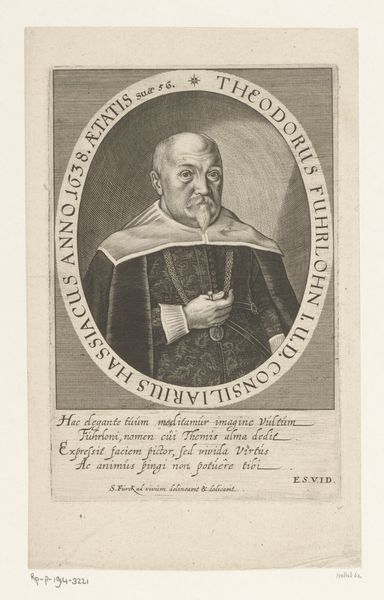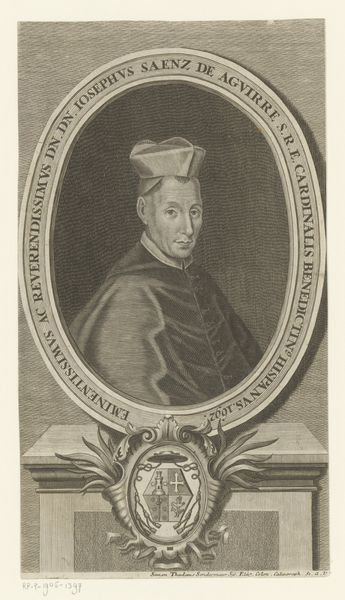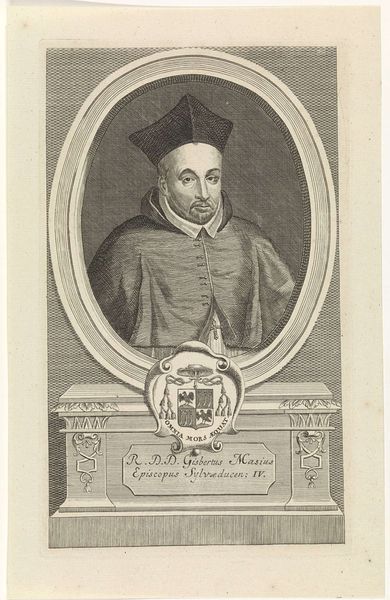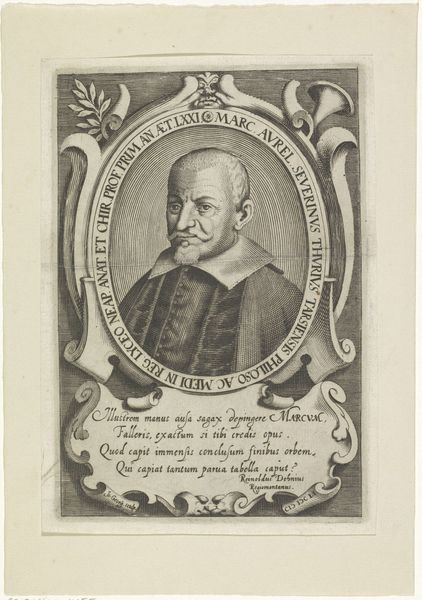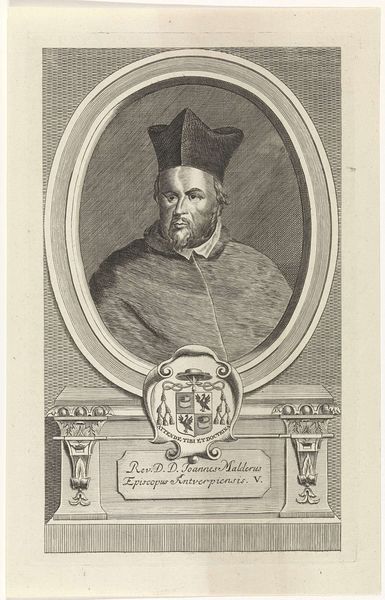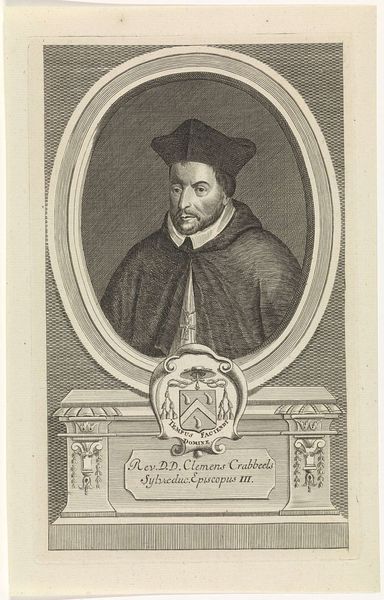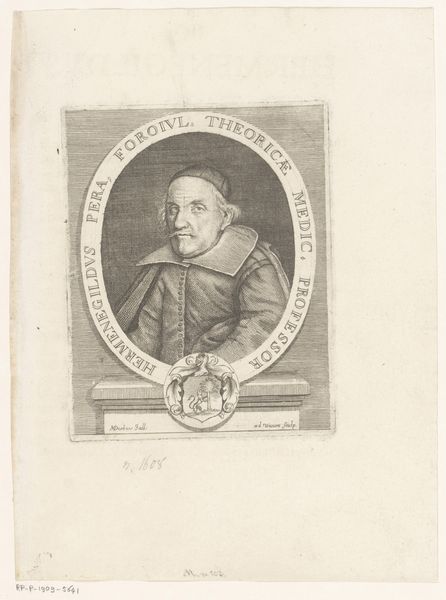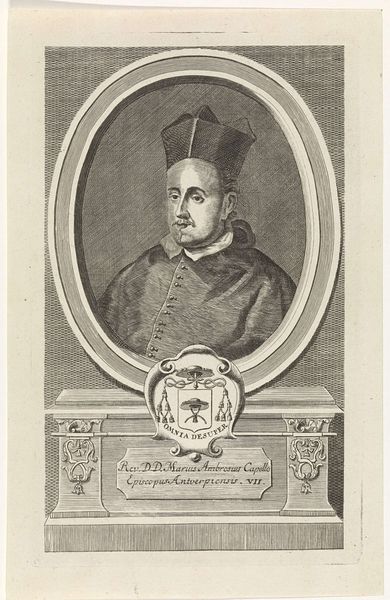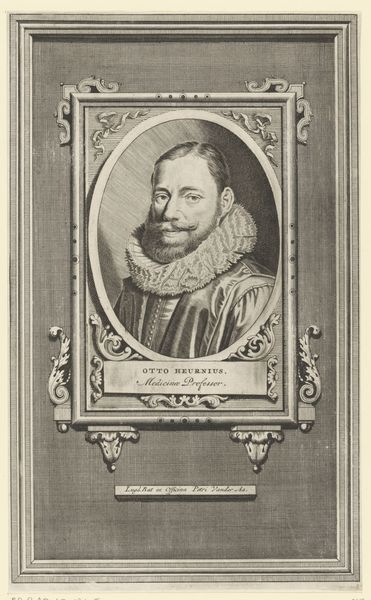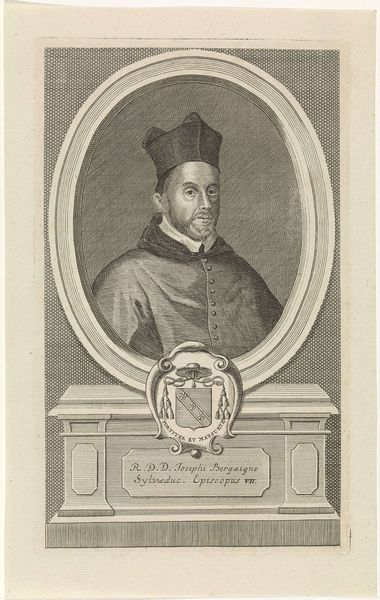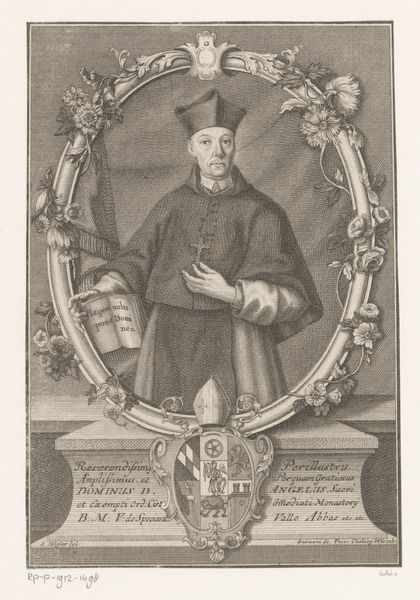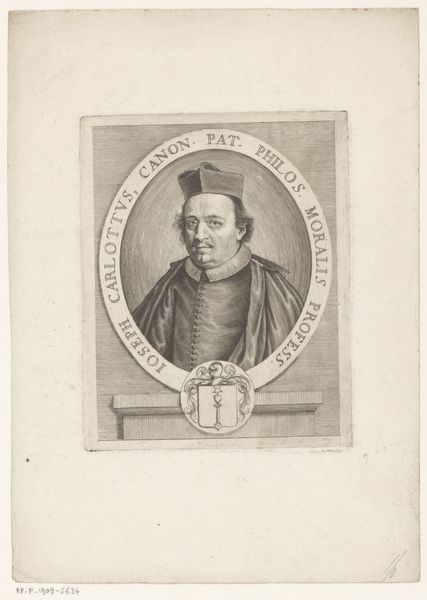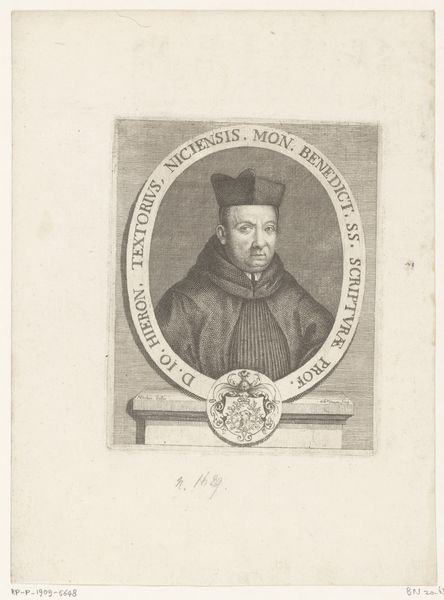
print, engraving
#
portrait
#
historical design
#
baroque
# print
#
old engraving style
#
history-painting
#
engraving
Dimensions: height 266 mm, width 163 mm
Copyright: Rijks Museum: Open Domain
Curator: Let’s delve into this piece: a Baroque engraving dating from about 1710 to 1725, titled “Portret van Jacob Boonen,” created by Jan Baptist Jongelinx. Editor: The detail is remarkable. My first impression is its formality and rigid structure, very representative of its era. Look at the labor embedded within, line by painstaking line. You can imagine the etcher bent over his copper plate. Curator: Indeed. It's crucial to consider Jacob Boonen himself, a prominent archbishop. This portrait presents him as a figure of power and authority within the Church during a period marked by religious and political tensions. Editor: Absolutely, and that power is reinforced through its production—engraving as a process allows for replication. Multiple impressions circulate, furthering the reach and visual dominance of the Church, turning his image into a symbol. Curator: We should also unpack the visual language: the ornate frame, the heraldic shield displaying Boonen’s motto “VINCE IN BONO.” What message were they intending to convey? How did Boonen's identity as a religious leader intersect with his societal role? Editor: The cross-hatching technique and the coat of arms denote class. Think of the consumption habits encouraged by displays such as this: it's also a statement of material and political strength, a display that extends the social narrative. Curator: Right. And reflecting on this engraving today urges us to think about the continued presence of religious figures in politics, and consider how artistic practices and productions solidify this standing, and how they can legitimize certain positions of power, perpetuating historical perspectives within society. Editor: Looking at it, I’m reminded of how the materiality of art has consistently served the ideologies of its time. Curator: I find the analysis sheds valuable light on this piece as we reassess its historical weight. Editor: I agree. Thinking through the artwork as a produced object is important for critically situating artworks in history.
Comments
No comments
Be the first to comment and join the conversation on the ultimate creative platform.
